11 Best first-time Europe itineraries for 1, 2, or 3 weeks
Europe is going to be very busy in the summer of 2024 as the world is back to normal and travel demand is higher than ever. One other key factor is that most European currencies are still hovering at lower levels historically compared to the US dollar, which means that Europe will feel somewhat cheap again this year. In fact, according to our World Backpacker Index, European cities like Lisbon, Madrid, and Munich are about 30% cheaper to visit than Boston, Chicago, and New York City. In other words, flying to Europe might seem expensive, but most things will be cheaper once you get there compared to the costs of visiting a large US city.
Below you’ll find 11 of the most popular and best itineraries for a first visit to Europe. Your first visit is not really the time to be different or creative, and the famous destinations tend to be popular for a reason. In other words, it’s kind of silly to visit, say, Bulgaria, if you’ve not yet been to France or Italy. I lay out the best options along with how long to stay in each place as a general guide. I also discuss Mediterranean cruises, which can actually be an amazing way to see a lot of Europe on your first visit, especially if you don’t like going back and forth to train stations and airports every 2 or 3 days.
For a bit of fun you might be interested in the cheapest 5-star hotels in Europe, which start at US$80 per night for really nice hotels. It helps show that if you choose some of the cheaper cities, you can treat yourself to some luxury that you can’t afford in most other places.
This article was last updated in March, 2024.
There are 11 starter itineraries described in detail below
- Classic London and Paris
- England and Scotland
- Paris and Italy
- Mediterranean cruise
- France, Belgium, and Netherlands
- Paris and elsewhere in France
- Italy
- Spain
- Germany
- Switzerland
- Best of cheap eastern Europe
For each itinerary there are suggestions of other destinations that are easy to add on to the main cities.
Note: This article was most recently updated in March, 2024
Building the best itinerary for your first trip to Europe
Below there are 11 popular itineraries for one week in Europe. If you’ve only got a week then choose one of them and assume you’ll return again to conquer more of this amazing part of the world. If you’ve got more time then you can choose from some of the top add-on suggestions for each one.
Start in the most famous cities
Your first visit to Europe is no time to try to be different or edgy. I recommend that you focus on these 5 great cities before you start branching out into cheaper or more obscure places.
Keep your travel days to a minimum
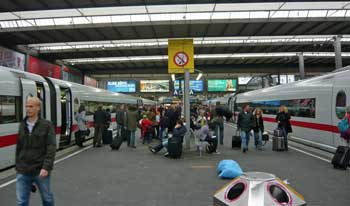
Spend 3 (or 4) nights in almost every major city
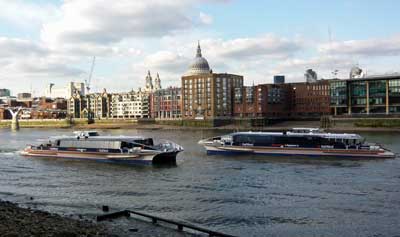
So many first-time visitors are initially planning on spending only 1 or 2 nights in major cities that I wrote a detailed explanation of why 3 nights is ideal for almost all European cities, even if you want to see as much as possible.
3 (or 4) nights will be enough for any city on your first trip
Most first-time visitors are tempted to move too quickly, but it can also be a mistake to move too slowly. It’s really amazing how much you can see in two full sightseeing days. If you spend too long in one city you’ll end up seeing things that are way down your list, while you could be in another city seeing things at the top of your list there.
Choose cities that are easy to reach from each other
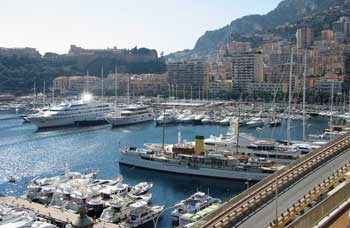
For your first trip it’s best to visit cities that are no more than a 5-hour train ride apart.
Choose cities that are connected by reasonable train rides rather than flights
To build on the point above, finding cheap flights within Europe is easy, but train travel is about a million times more enjoyable and less stressful. You’ll enjoy the train rides almost as much as the cities, so focus on places that are within 5 hours of each other by train.
Start with one of the classic itineraries below, and then add to it if you have more time
If you only have 7 days then you’ll find a list below of classic itineraries that are well-suited to a first visit to Europe. Hopefully you have more than 7 days though, and if you do you can add in one or more of the suggested add-on cities to build an itinerary that appeals most to you.
Best 1-week itineraries for the first time in Europe
Itinerary 1: Classic London and Paris
Fly into either city and take the 2-hour Eurostar train between them
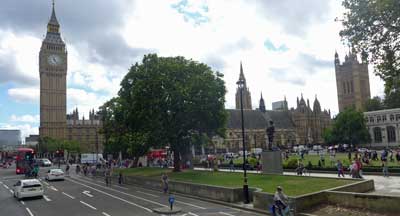
London highlights
- Big Ben and Parliament
- Westminster Abbey and St. Paul’s Cathedral
- Tower of London and Tower Bridge
- West End shows (Broadway equivalent) and classic pubs
- Buckingham Palace and Windsor Castle
Paris is actually far more beautiful than London and the food is famously much better as well. Since Paris gets so many tourists from non-French speaking countries, it’s easy to get by on just English, and the Metro system makes it fast and easy to get around. The architecture of both cities is amazing from the Tower of London, Big Ben, Westminster Abbey to the Louvre and the Eiffel Tower. These cities each pack a huge punch and they are very different from each other as well. Actually, England is arguably the best choice for your first trip to Europe.
Paris highlights
- Eiffel Tower
- Louvre Museum and Museum de Orsay
- Arc de Triomphe and other monuments
- Montmartre neighborhood and Sacré Coeur Cathedral
- Probably the world’s best affordable restaurants and wine
Best add-ons to London and Paris
- Edinburgh (2 or 3 nights, from London)
- Amsterdam (2 or 3 nights, from Paris)
- Bruges and Brussels (2 nights, from Paris)
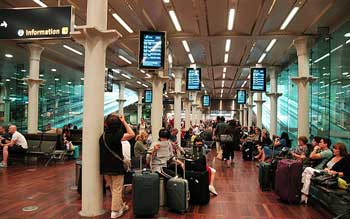
>>>Best one-week London and Paris itinerary in detail
>>>Check London hotel deals
>>>Check Paris hotel deals
Itinerary 2: England and Scotland
- London (3 or 4 nights)
- York (1 night)
- Edinburgh, Scotland (2 or 3 nights)
- Inverness, Scotland (2 or 3 nights)
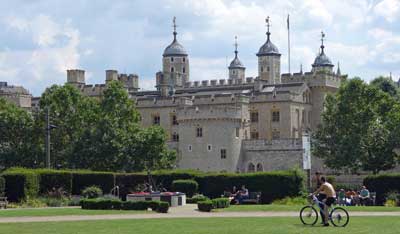
York is a small Roman city with intact city walls and one of the most famous cathedrals in Europe. Edinburgh is not only the capital of Scotland, but it’s easily the second most interesting city in all of Britain. If your time is short, skip York and spend more time in Edinburgh.
If you prefer to focus on the south of England on your first trip then the best option is to go to Bath or nearby Bristol after London. Bath is another of England’s top destinations and it’s a gorgeous city that has been a spa resort for many centuries. It’s also reasonably close to Stonehenge. You can also easily get to Cornwall in England’s southwest corner from Bath, and that’s a whole different and fascinating experience (with nicer weather than up north).
If you’ve got more than a week and want to spend more time in Scotland, especially in the summer months, the place to head to is Inverness. It’s a small town that is considered the gateway to the Scottish Highlands, but it’s an interesting and charming place on its own. You can take day-trips by bus to the highlights of the Highlands including the Isle of Skye and Loch Ness. Between you and me, it’s better to minimize time in Loch Ness or skip it altogether because it’s not one of the more photogenic parts of Scotland and the monster has always been a hoax.
Travel times between the recommended places
- London to York by train: 2 hours
- York to Edinburgh by train: 2.5 hours
- London to Edinburgh by train: 4 hours
- Edinburgh to Inverness by train: 3.5 hours
- London to Bath by train: 85 minutes
Best add-ons to England and Scotland
If you think you want to spend your whole trip in Britain you should have a look at our article on the best itineraries in England, Scotland, and Wales.
>>>Check London hotel deals
>>>Check Edinburgh hotel deals
Itinerary 3: Paris and Italy
- Paris (3 or 4 nights)
- Venice (1 night)
- Florence (2 or 3 nights)
- Rome (3 nights)
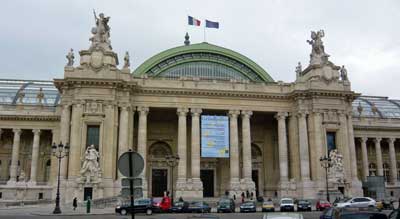
From Paris you can easily fly to Venice (or nearby Treviso) where you should try to spend about 24 hours. Venice is small enough to see in a full day, and so crowded that most people are satisfied to leave after that day. The key is to stay in the main part of the main island so you can enjoy Venice before the cruise passengers and day-trippers arrive, and also after they leave for the day. Two nights in Venice would not be wasted time, and it’s possibly the most gorgeous city in the entire world, but you can see the best of it in a bit over 24 hours.
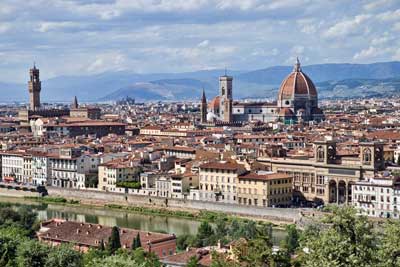
Rome also lives up to the hype and spending a day in the Vatican City will be a highlight even for non-Catholics, but it’s also a crowded and busy city so three days is usually enough for most people. Similar to Paris, Rome is an unusually beautiful city from almost any angle when you are in the historical center. You’ll walk through a stunning piazza (town square) and then turn a corner and you’ll see gorgeous buildings or public statues that are as nice as anything in the museums. Seriously, it’s worth a visit.
Paris to Venice flight: 1 hour 35 minutes
Venice to Florence by train: 1 hour 53 minutes
Florence to Rome by train: 1 hour 16 minutes
You can of course instead fly from Paris to Rome and then go north to Florence and then to Venice and fly home (or back to Paris) from there, and it would be just as enjoyable.
Best add-ons to Paris and Italy
France
- Nice/Cannes/Monaco (2 or 3 nights)
- Avignon (2 nights)
- Bourges (2 nights)
- Bordeaux (2 nights)
- Aix-en-Provence (2 nights)
- Reims (2 nights)
- Dijon/Burgundy (2 nights)
Italy
- Milan (1 or 2 nights)
- Lake Como (2 nights)
- Siena (2 nights)
- Cinque Terre (1 night)
- Naples/Sorrento/Amalfi Coast/Pompeii/Capri (3 to 5 nights)
- Sicily (3 to 4 nights)
>>>Much more information in this article about the best France and Italy itineraries
>>>Check Paris hotel deals
>>>Check Venice hotel deals
>>>Check Florence hotel deals
>>>Check Rome hotel deals
Itinerary 4: Mediterranean cruise
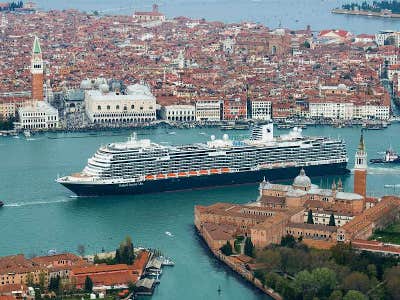
In spite of the reputation of cruises to be floating buffets, they can actually be an excellent way to visit a great number of amazing European cities in a short time. The ship typically is in port from the early morning until mid evening, often giving you the opportunity to have dinner in the city (unlike Caribbean cruises). Better still, the cruise ports are often near the center of town, so you can just walk off the ship and do sightseeing on foot or by public transportation.
Mediterranean cruises usually start at 7 nights but can go up to 3 weeks, which can provide an amazing tour of the entire region without having to pack and repack your bags more than once. They also can provide excellent value, especially compared to the price of taking trains or flights and finding new hotels in every destination.
Most popular Mediterranean departure ports
Barcelona, Spain – It’s an easy port to reach. Ships generally go from Barcelona with stops in France and then Italy.
Rome (Civitavecchia), Italy – The port isn’t very close to Rome, but it’s easy to get back and forth. Ships go west to France and Spain as well as south around the tip of Italy and then on to Croatia, Venice, and to Greece.
Venice, Italy – The cruise ships no longer dock close to the best tourist areas, but it’s easy enough to visit Venice for a day or two before boarding a ship. Ships starting in Venice go south and then head west and to Rome and then to France, or they go south to Croatia and then head east to Greece.
Athens, Greece – The cruise port of Piraeus is just south of Athens and easy to reach. Ships from Athens usually head west towards Croatia, Italy, France, and Spain, but there are also ships that visit Greek islands and Turkey.
>>>Check for deals on Mediterranean cruises
Alternative to consider: a river cruise
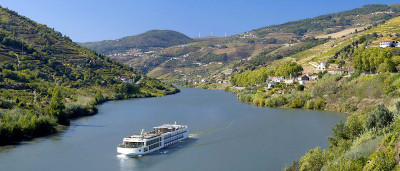
Amsterdam, Budapest, and Prague are some of the most popular river cruise ports, but there are dozens of others including many smaller towns in France where few other tourists will be when you stroll off the ship. There is little or no entertainment on the river cruise ships, but passengers don’t miss it because the entire day and into the evening is spent just steps from local cultural offerings and restaurants.
>>>Check for Europe and river cruise deals
Itinerary 5: France, Belgium, and Netherlands
Paris to Brussels: 1 hour 22 minutes
Brussels to Bruge: 58 minutes
Bruges to Amsterdam: 2 hours 45 minutes
Amsterdam to Paris: 3 hours 17 minutes
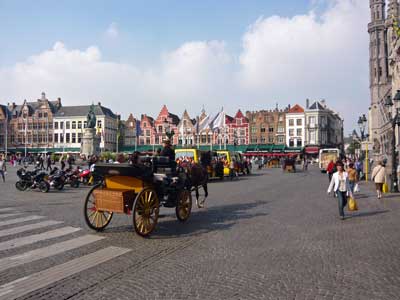
Spending 4 nights in Paris and 3 nights in Amsterdam would be a great trip, but if you want to see something else you’ve got a couple options in between. My advice is to spend an afternoon looking around the Grand Place (main square) in Brussels and then hop a 58-minute train ride to Bruges for a night or two. Brussels isn’t a great tourist city, but Bruges really is so it’s a better option for most people. Whatever you choose out of this group, you can be back in Paris on another high-speed train for your flight home.
Best add-ons to France, Belgium, and Netherlands
- Luxembourg City (1 or 2 nights)
- Cologne, Germany (1 or 2 nights)
- London (3 or 4 nights)
- Interlaken, Switzerland (2 or 3 nights)
>>>Check Paris hotel deals
>>>Check Bruges hotel deals
>>>Check Amsterdam hotel deals
Itinerary 6: Paris and elsewhere in France
- Paris (3 or 4 nights)
And a choice of:
- Nice/Cannes/Monaco (2 or 3 nights)
- Avignon (2 nights)
- Bourges (2 nights)
- Bordeaux (2 nights)
- Aix-en-Provence (2 nights)
- Reims (2 nights)
- Dijon/Burgundy (2 nights)
- Normandy (2 nights)
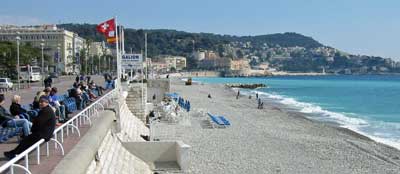
While Nice is a wonderful tourist city for a look at the French Riviera, the other larger cities of Lyon and Marseilles are probably better saved for a future trip because they are light on key sights compared to many smaller towns. Wine lovers can rent a car or take trains into Bordeaux or Burgundy. Since you can get between most of these towns by train in 2 hours or less, spending only 2 nights in each one is a reasonable option if you want to see a lot in a short time.
Normandy is an interesting choice and easy to reach in only about two hours by train from Paris. Some visitors like to see the famous WWII beaches and memorials, while others (especially in summer) like to check out one or more of the beach-resort towns. Deauville is one of the more famous of those, and it’s also famous for its horse race track and as one of the epicenters of the industry in Europe.
Best add-ons to Paris and elsewhere
- More France, of course
- London (3 or 4 nights)
- Interlaken, Switzerland (2 or 3 nights)
- Amsterdam (2 or 3 nights)
>>>Check Paris hotel deals
>>>Check Nice hotel deals
Itinerary 7: Italy
Rome to Florence: 1 hour 16 minutes
Florence to Venice: 1 hour 53 minutes
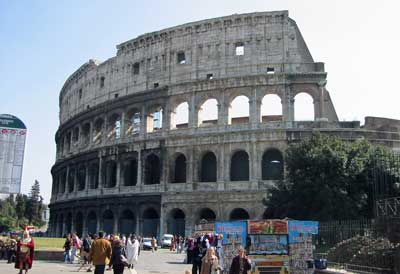
Venice is small enough that you can see the main sights in about 24 hours, and it’s so insanely crowded that many people tire of it after about a day as well. It’s better to pay more for a hotel to be on the main island and visit quickly than to save money with a hotel on the mainland where you’ll be in crowds going back and forth as well. Florence is the most relaxing of the 3, and also a great base for side trips to Pisa, Siena, and Cinque Terre, just to name a few.
Going to Italy? Here are the best first-time Italy itineraries for 3 days to 2 weeks (in much greater detail)
Best add-ons to Italy
- Milan (1 or 2 nights)
- Lake Como (2 nights)
- Siena (2 nights)
- Cinque Terre (1 night)
- Naples/Sorrento/Amalfi Coast/Pompeii/Capri (3 to 5 nights)
- Sicily (3 to 4 nights)
>>>Check Rome hotel deals
>>>Check Florence hotel deals
>>>Check Venice hotel deals
Itinerary 8: Spain
Madrid to Barcelona: 2 hours 30 minutes
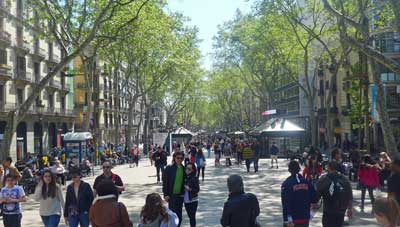
A huge part of Spain’s tourism industry is built around its southern beaches and islands such as Ibiza, Mallorca, and Tenerife (in the Canary Islands). For most people it’s best to ignore those places on your first trip because none of the beaches are special enough to spend days on them compared to the culture of the cities.
Best add-ons to Spain
By popular demand, I’ve added a full article on where to go in Spain with itineraries from 7 to 10 days up to two weeks.
>>>Check Madrid hotel deals
>>>Check Barcelona hotel deals
>>>Check Lisbon hotel deals
Itinerary 9: Germany
Berlin to Munich: 6 hours 2 minutes
Munich to Rothenburg ob der Tauber: 2 hours 56 minutes
Munich to Füssen: 2 hours 4 minutes
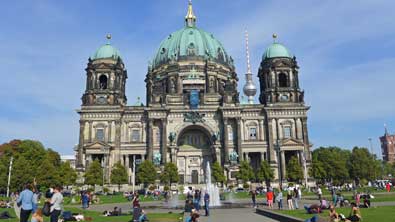
Those two cities are the keys to a Germany visit, and after that you’ve got a wide variety of choices. I cover most of the popular choices in my article on where to go in Germany, which covers several smaller towns that are major highlights.
Best add-ons to Germany
- Cologne (1 or 2 nights)
- Hamburg (2 or 3 nights)
- Amsterdam (3 nights)
- Prague (3 nights)
- Salzburg (2 or 3 nights)
- Vienna (3 nights)
- Interlaken, Switzerland (3 nights)
- Lucerne, Switzerland (2 or 3 nights)
>>>Check Berlin hotel deals
>>>Check Munich hotel deals
Itinerary 10: Switzerland
- Interlaken (3 nights)
- Bern (1 night)
- Lucerne (3 nights)
Zurich Airport to Interlaken: 2 hours 10 minutes
Interlaken to Bern: 53 minutes
Bern to Lucerne: 1 hour 50 minutes
Lucerne to Zurich Airport: 1 hour 3 minutes
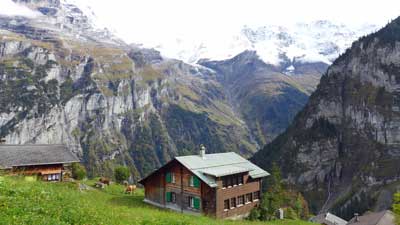
Interlaken is the best hub for the most dramatic Alps views and experiences. The one-hour cable car ride up to the Schilthorn observation deck is something you’ll never forget, and the only thing that might be more dramatic is the train ride up to the Jungfraujoch station, which is the highest in Europe. Lucerne is almost as beautiful with a scenic lake at its heart and also great mountaintop views nearby. If you do want to see a Swiss city then the capital of Bern is the most interesting and photogenic on a short visit. Read more about where to go in Switzerland for even more ideas.
Best add-ons to Switzerland
>>>Check Interlaken hotel deals
>>>Check Lucerne hotel deals
Itinerary 11: Eastern Europe’s best cheap cities
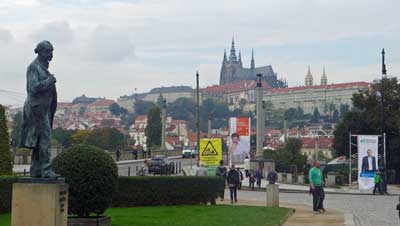
Each of these cities is beautiful and historic, but English is less widely spoken so they can also be quite a bit more challenging for a first-time visitor. Another difficulty is that the trains between them are still quite slow compared to the high-speed rail in the West, so it takes most of a day from one to another, and a bus is often a better choice. I cover this best cheap Europe itinerary more fully in the linked article.
Prague to Budapest: 6 hours 41 minutes
Budapest to Krakow: 9 hours 54 minutes (flying might be better)
Best add-ons to cheap Eastern Europe
- Cesky Krumlov, Czechia (2 nights)
- Ljubljana, Slovenia (2 or 3 nights)
- Split, Croatia (3 nights)
- Belgrade, Serbia (2 or 3 nights)
- Sarajevo, Bosnia and Herzegovina (2 or 3 nights)
- Sofia, Bulgaria (2 or 3 nights)
>>>Check Prague hotel deals
>>>Check Budapest hotel deals
>>>Check Krakow hotel deals


Hi Roger,
First of all, wishing you a very Happy Christmas and Happy New Year 2020.
I am Shashank from India and I had contacted you earlier regaring Europe visit in December and I am able to make Paris, Austria and Italy(Florence and Rome) with your help so many thanks for that.
Now, me and my wife are planning to Visit UK in April-May 2020 and need your help on that too. We would have around 16 days with us and would like to visit places that are unique and beautiful, considering we have already seen France and Italy. We don’t want to spend much time in inter travelling and we are thinking of covering Amsterdam, London, Edinburg & Scotland.
Need advice on our planning and recommendations for the choice of routes and connections (flight / train / bus). Any more places/attractions you would like to suggest.
Thanks,
Shashank Jain
Shashank,
I’m glad I was able to help before and that the trip went well. Here are my recommendations for places to visit in England, Wales, and Scotland on a trip like you have in mind. Obviously you’ll want to visit London, and Edinburgh is also very much worthwhile.
Amsterdam could also be great for a few days. You can get there by Eurostar train from London in about 5 hours, but it is often cheaper to fly and you might be able to get cheap flights from one of the smaller London airports or Edinburgh or almost any other major city in Britain.
Getting around Britain by train is almost always the best way to go, but it’s very important to book at least a few weeks in advance. Even more than in France and Italy, the train fares in Britain are surprisingly cheap if you buy them at least a few weeks in advance, and they are usually insanely expensive if you buy them on travel day. The bus/coach service in Britain is also pretty good and usually reasonably priced, but the trains are almost always faster and much more comfortable. Let me know if you have any other questions. -Roger
Hi Roger,
My fiancee and I are planning an elopement to Denmark in September of 2020. We are both first time Europe travelers from the US and want to make the most of our 3 weeks. My only request is that I make it to Octoberfest.
Would you provide us an itinerary that would accommodate? Many thanks
Wes,
That sounds like it’s going to be an amazing trip. I usually prefer to not type out specific itineraries because everyone’s tastes and budgets are so different. That’s why I offer all these different suggestions so hopefully people can find one that appeals to them and then modify it to fit their situation. The one thing I will mention again is that I highly recommend spending at least 3 nights in nearly any place you visit. So if you’ve got 3 weeks I’d target right around 7 cities. It’s also best (if possible) to choose cities that are reasonable train distance from each other because taking trains around Europe is one of the great pleasures of a visit, while flying around Europe is just as much of a hassle as flying around anywhere else.
Copenhagen is pretty remote, as you certainly know, and if you are going somewhere else in Denmark it might take even more time. So flying in and out of Denmark might be best. Berlin, Hamburg, and even Amsterdam are within train range of Copenhagen so you could use one or two of those to build your trip around. I’m happy to help with more advice, but I would prefer that you choose most of your cities. If you want to end up in Munich then Prague and Berlin are both good cities to visit before or after. -Roger
Hey!
I am travelling from India along with my Husband for our Honeymoon. We are planning for a trip covering 4 countries in Eastern Europe around the month of April. We plan to cover 4 countries – 1. Czech 2. Budapest 3. Austria 4. Croatia in a duration of 15 days.
We are looking for an itinerary and the best places to cover in these 4 countries. Any suggestions are welcome! 🙂
Arushi,
First off, I hope you’ll at least skim my article on why 3 nights is the ideal amount of time in European cities even if you are in a hurry. The short version is that it’s hard to do much (or sometimes any) sightseeing on a travel day, so if you only stay 2 nights in each city you are literally spending every other day in transit and not seeing much else.
If I were you I think I’d save Croatia for a future trip. It’ll be pretty chilly in April, and Croatia’s best destinations are all along the coast so it’s better in warmer weather. You could start in Prague for 3 nights and then stop off in Cesky Krumlov for 2 nights (it’s a small town so 2 nights should actually be enough), and then to Salzburg for 3 nights and then to Vienna for 3 nights and finally to Budapest for your last 3 or 4 nights. Let me know if you have any other questions. -Roger
Thank you so much!! you have been the most helpful and giving me useful information!! appreciate much! so its safe to say that our eurail pass is enough for us to travel from Italy-Swizerland-amstamdam- paris? I also saw online that in addition to Eurail pass, we need to buy another reservation ticket to reserve our seats?
Will explore more on the Half fare card, but we are currently spending switzerland and amsterdam with 3days each. What are some of the must do in both places?
Rachel,
As for must-do places in Switzerland, I have the main highlights listed on this article about where to go in Switzerland on a short trip. We’ve got the top attractions in Amsterdam on our prices in Amsterdam page. Those should give you lots of ideas.
With a Eurail Pass you can ride for free without a reservation in most of northern Europe, but in France, Italy, and Spain you will need a seat reservation for the high-speed intercity trains. So any train to or from Paris would require a seat reservation and those can actually sell out in advance because they have quotas for rail passes. In Switzerland you can just hop aboard and find a seat. Let me know if you have any other questions. -Roger
Thank you so much for ur suggestion! we bought the eurail global pass, is it sufficient? if we only go switzerland for 3 days , do we need the swiss pass?
Rachel,
The Eurail Global Pass will allow you to ride for free on all of the normal intercity trains in Switzerland (Lucerne to Interlaken, for example), and it will give you a 25% discount on most of the top attractions such as the Jungfraujoch mountain railway or the Schilthorn cable car. The Swiss Travel Pass gives you free train travel and much more. It gives you free boat rides and cable cars (including Schilthorn), and even entry to most museums. However, the Swiss Travel Pass is also quite expensive. If you’ve already got a Global Eurail Pass you probably wouldn’t want to ALSO buy a Swiss Travel Pass, but you might look into a Half Fare Card if you want to do some of the expensive things in Switzerland including Jungfraujoch. In fact, the CHF120 Half Fare Card almost pays for itself on Jungfraujoch alone because it saves about CHF100. Let me know if you have any other questions. -Roger
We are flying to Italy from Santorini in Decemeber then to switzerland than to amsterdam and to paris.
We are thinking can we take train from Italy to Switzerland using the eurall pass? what are the places in Italy that are nice for Chirstmas.?
Rachel,
Yes, you can take the train from Milan through the Alps into Switzerland in only a few hours, and it’s a gorgeous ride. I’d go to the Interlaken area for the best scenery and the most things to do.
As for Italy, Rome and Florence are the obvious choices for Christmas time. Venice would also be nice, but in winter they have the high waters that can make visiting a bit of a pain if you get unlucky. If this is your first trip to Italy I would focus on Rome and Florence, hopefully for 3 nights each. Let me know if you have any other questions. -Roger
Hey Roger,
Thanks for the quick reply, we came up with a tentative itinerary. Let me know if u think its practical. Considering its our honeymoon, we would like to keep travel less and not make it too hectic. Ok se we thought :
Budapest / Prague (2N) (Including it just for christmas markets)
Venice (3N) and Florence (2N)
Amsterdam (2N) (just for new years parties)
Madrid (3N) Barcelona (3N)
i feel we need to cut down atleast one country but cant seem to decide. Ur suggestions would be great .
Hi Roger,
Thanks for this article..really informative n helpful. I am planning for my honeymoon in europe from 22-23 dec 2019 to 5th jan 2020. we wanted to have nice christmas festivities and new year’s. But we cant really seem to figure out the itinerary. we are thinking of christmas in budapest (2 nights), then italy for 4 nights and then spain or netherlands…really confused regd weather during that time. Any help woud be great
Jazz,
I’m glad this is helpful. You should find most of what you are looking for on my article about the best Europe destinations in December. That article explains which places have really good Christmas celebrations and the weather in all of them. Budapest should be nice, although it’s one of the chillier parts of Europe.
Spain would be great in that they do Christmas in a pretty big way and the weather is relatively mild. The Netherlands will be chilly and usually a bit wet, and it gets dark in Amsterdam by 4:30 PM in December and it doesn’t get light until almost 9 AM. Also, their big Christmas celebration is early in December, although the Christmas shopping season does go on through the month. Let me know if you have any other questions. -Roger
Hi Roger,
I was researching for travel to Europe and landed on your super helpful blog. I was planning a trip to include Italy, France, Switzerland and wanted your advice on planning the best route and flow from one city to the other. I will be traveling with my spouse and 2 kids – 10 and 11 year olds. It’s our first trip to Europe besides going to London. Based on your blogs, i have shaped the following program but would like recommendations on the number of nights in each and route planning, airports I should fly in and out of for this trip. I wanted suggestions for both options- 2 weeks Italy and Paris and 3 weeks in Italy, Paris and Switzerland.
Also, if we go with the first option with Almafi, which airport should we fly out back to the US? Rome and Paris are much cheaper options, i don’t see many options out of Naples.
Thanks in advance.
2 weeks –
1. Italy (Rome- 3 nights, Venice – 2 nights, Florence-2 nights)
2. Italy – Sorrento/Almafi area (4 nights)
3. Paris – 3 nights
If we do 3 weeks –
3. Lucerne & Interlaken (5 nights)
Sia,
I’m glad you find this helpful. Your plan sounds really great. It appears that you’ve taken my advice almost down to the last detail because I don’t really have much else to add. If you have one more night in Paris it would be nice, but three nights is enough to see the main sights.
You might also consider 1 night in Venice and 3 nights in Florence, but 2 and 2 is also fine. The thing is that Venice is quite compact and very crowded, and it’s really amazing to see at first, but many people get tired of the crowds. It’s best to stay on the main island because it’s fairly quiet in the mornings and the evenings when most of the day trippers and cruise passengers are gone.
And if you add that extra week I think 3 nights in Interlaken and 2 nights in Lucerne is an ideal first trip.
The high-speed train from Naples to Rome only takes about 90 minutes, so it’s usually best to book a cheaper flight from Rome.
I’ll be happy to help if you have any specific questions about any of this. It looks like you’ve got a great plan already. -Roger
Hi Roger!
Hope you can help me.
I’m going to Europe in October (my first solo trip) and would like your input.
Originally, I planned to spent my 3 weeks in Netherlands, but then I started reading about planning your first solo trip to Europe and now I’m on the following:
– First 2 nights in Eindhoven (I land the 4th in Amsterdam and have a fest that I want to attend the 5th in Eindhoven… …so decided to stay there for the first 2 nights.)
– 4 nights in Paris
– 3 nights in Belgium (Bruges – 2 and Antwerp – 1… …. or maybe 3 nights in Bruges with day trips to Brussels and Antwerp… …dunno)
– 11 nights in Netherlands (Places I had in mind: Groningen, Rotterdam, Giethoorn, The Hague, Amsterdam, Utrecht, Maastricht and maybe Texel)
Now here’s the thing… …I don’t see you mention any other parts of Netherlands except for Amsterdam so now I’m wondering if I should maybe add another major city instead of doing Netherlands for so long?
I know travelling by train would be my best option probably, but how do I choose or when do I buy the ticket and when is the best time to travel to minimise my travel time.
Your input would be much appreciated!
I do have more questions, but I’ll leave you with this for now.
Cheers!
Maritza,
I’ll be happy to try to help. I think your new plan is great. I lived in Amsterdam for several months and have visited countless other times, so I’m a huge fan. But the main reason I mainly focus on Amsterdam rather than other places in the Netherlands is that it’s a rather small and fairly homogeneous country, and nearly all of the most interesting things are in or very near Amsterdam itself. My information tends to be focused at first-time travelers to these areas, so it’s rare that someone would have as much time as you to stay in Benelux. It’s common that some travelers visit the Netherlands and fall in love with the place so on their next visit they plan on exploring much more of the small country. In that case it’s a bit easier to plan yourself because you already know what to expect.
Also, it’s actually pretty easy to visit all of those places on day trips, and most of them are an hour or less from Amsterdam on intercity trains. On the other hand, hotels in Amsterdam are much more expensive than in most of those other cities, so you’d get better value by staying in, Utrecht, for example.
As far as the bigger picture goes, you’ll visit Amsterdam and be blown away. Then you’ll go to Rotterdam and the Hague and Utrecht and they’ll generally look almost identical to Amsterdam, except without all the tourists and hotels and famous attractions. In other words, some people find them to be boring versions of Amsterdam, while others prefer to escape the crowds. Another interesting thing is that most of central Amsterdam was spared bombing in WWII, while Rotterdam was almost flattened. So when you wander around Rotterdam you’ll be surrounded by old-looking buildings that were mostly built in the late 1940s and 1950s.
And then you’ll get to Paris and you won’t believe how beautiful the city center is, and how different it looks from the Dutch cities. With that in mind, I normally recommend that on first trips people try to explore a group of diverse places rather than sticking in one similar area. Belgium also looks almost exactly like those Dutch cities, by the way. Each of them is beautiful (including Utrecht and Maastricht etc), but they are all quite similar. If you instead spent only 3 or 4 days in that area and then also added London and perhaps Rome and Florence and Venice, you’d be exploring places that are each very different from each other.
Regardless of exactly where you go, I’d highly recommend to do as much or hopefully all of your travel by train. It’s extremely fun and surprisingly comfortable and usually quick. For longer intercity trips such as Amsterdam to Paris, it’s best to buy tickets as long in advance as possible for the lowest fares and most availability. October is a slower month so you can still probably get decent fares if you book only a week or two in advance, but if you try to book a longer trip on the same day it’ll probably cost a fortune.
On the other hand, many shorter trips such as Amsterdam to Rotterdam operate as commuter railways where tickets are often a fixed price no matter when you buy, and usually reasonably priced. It’s best to check each journey to see what the fares are if you book, say, 60 days out vs. if you book 2 days out. If it’s a big price difference then it’s important to book as early as possible. But if it’s a small difference or the same, you can just buy your ticket on departure day. I’m happy to help if you have more questions. I love trips like this. -Roger